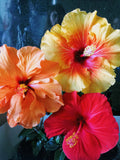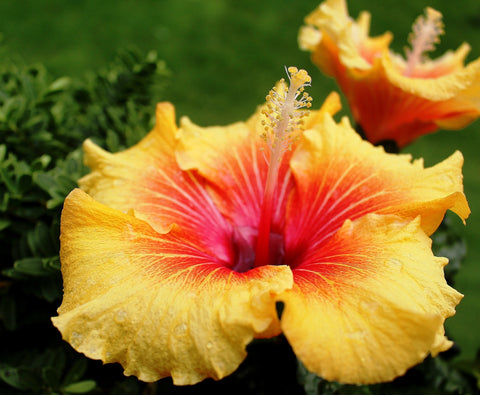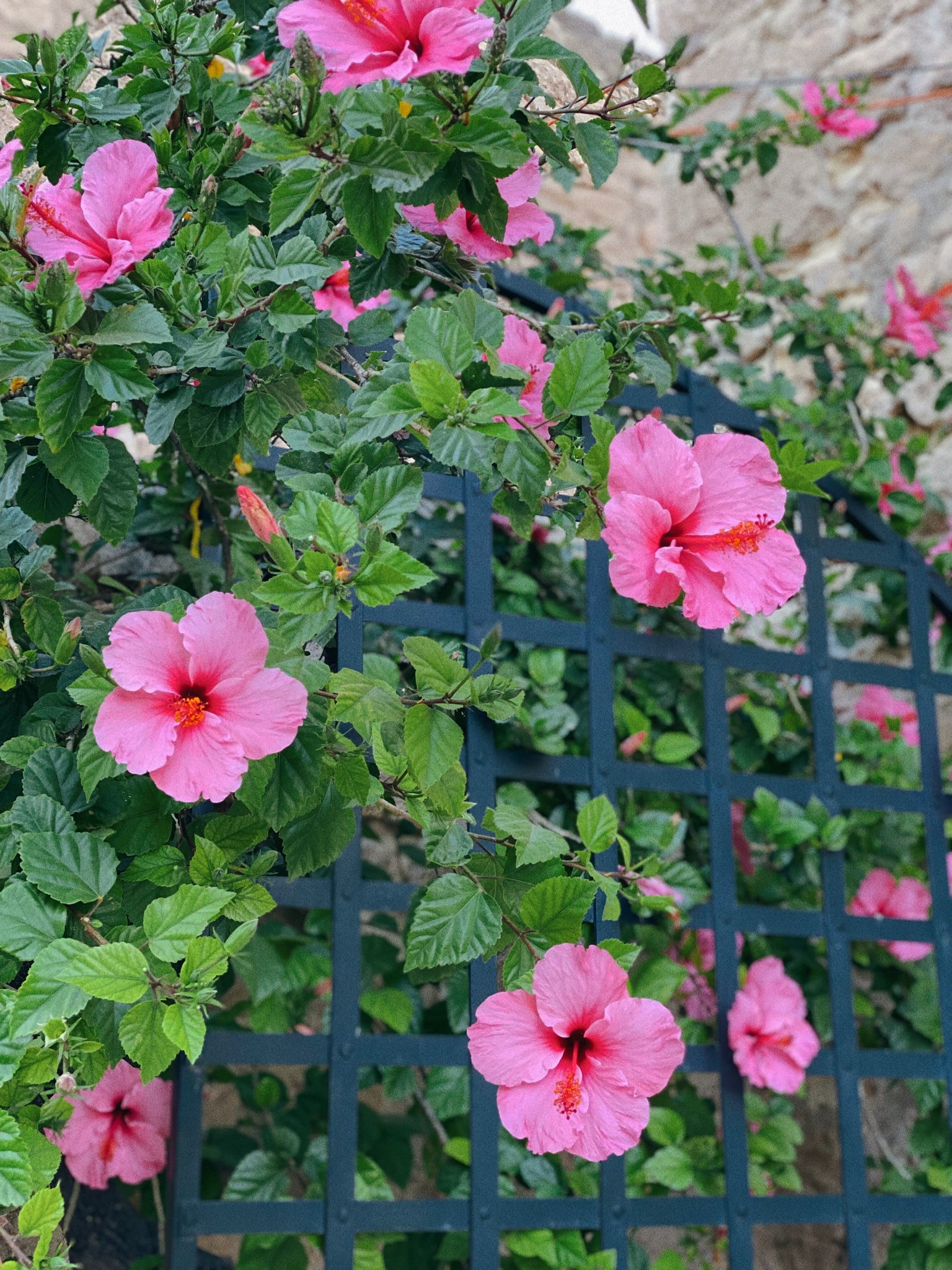Hardy hibiscus are fast-growing plants with dinner plate-sized flowers that emerge in late summer. They are hardy to zones 4-9. Native to North America, all varieties originate from Hibiscus moscheutos or Swamp Hibiscus. They require full sun for at least 6 hours and moist soils. They erupt quickly after the threat of frost has passed and can grow to 3-7 ft. tall by 3-4 ft. wide depending on the variety.
Hibiscus flowers are loved by pollinators. Flowers last for many days outside on the stems but they do not last long as cut flowers. They can range in color

from pure white to deepest red and all colors in between. They can have blush flowers, single-colored flowers, or swirled flowers. Their leaves can be green to maroon. They are very slow to emerge and are very ground temperature sensitive so do not give up on them.
Hibiscus plants die down to the ground each year and re-emerge the following late spring. Once they poke thru, they grow very quickly. To admire more flowers, keep the plant well-fertilized as it takes a lot of energy to produce such large flowers. Flower-tone by Espoma works nicely. It is best to fertilize just as the plant emerges yearly. Also, if planted in a dry area remember they require moist soil so water during a drought.
There are over 50 varieties on the market today offering all sizes and colors. The one issue found is that Japanese beetles love to munch on the leaves and buds so be prepared. Learn more about controlling Japanese beetles here.

Some popular varieties are Lord Baltimore, Vintage Wine, Berry Awesome, Midnight Marvel, Fireball, Summerific Series, Holy Grail, and many others.
Hibiscus provide great late color in the garden and are reliable in the Mid-Atlantic area.

























